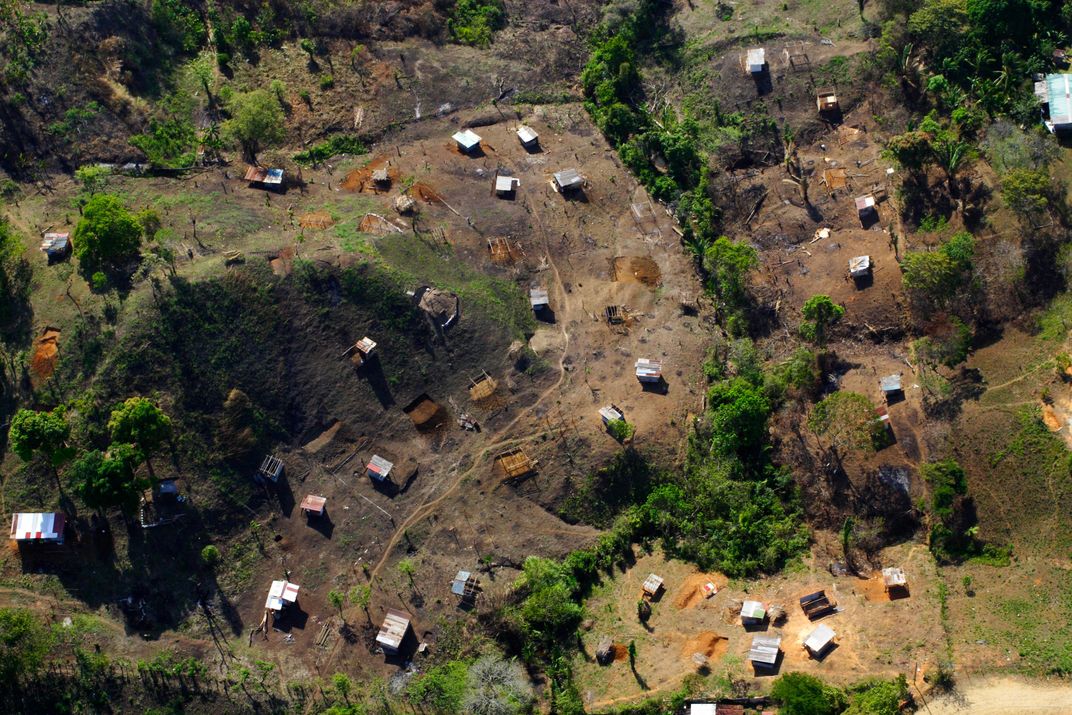Some Forests Have Outsized Impacts on Local Water
A comprehensive new report emphasizes the importance of upland forests for providing clean water, mitigating storms and reducing erosion
/https://tf-cmsv2-smithsonianmag-media.s3.amazonaws.com/filer/aa/35/aa358778-6987-4a29-8ff2-d93e34347e00/42-18437774.jpg)
Steepland forests are winners in terms of benefits to local communities, and especially their water. These forests can alleviate uphill problems that trickle downstream, including those caused by pollution, erosion, drought and flooding. The findings come just in time for a predicted El-Nino-caused extreme drought.
“We’re documenting over and over again the importance of forests for mitigating floods and providing dry season water,” says Jefferson Hall, a forest ecologist at the Smithsonian Tropical Research Institute (STRI) in Panama.
A new report from STRI and the Inter-American Development Bank focuses on tropical steeplands in Central and South America—notoriously tricky places to live and work because they are situated at slopes greater than 7 degrees, where erosion and gravity present constant challenges. Because of their location, those areas also have an outsized influence on rivers, lakes, cities and farms below, since any water flowing downhill carries with it toxins, waste material and loose soil from higher up.
Work in the Panama Canal Watershed shows that, compared to all other landscape types in similar places, forests do the best job at mitigating storm floods because they soak up rainwater like sponges. But when the rainy season passes and the dry season sets in, they continue to deliver by releasing much-needed stored groundwater, which flows out through seeps, springs and riverbeds. The quality of water that filters down through forests is also of superior quality compared to water from other sources.
Landslides, too, can be alleviated by the presence of forests, the authors found—but only to a point. If a storm is big enough, no amount of forest cover will prevent a potential disaster. “As people get pushed into marginalized steepland settings because of poverty, or choose to live there because they’re rich and the views are great, they expose themselves to big storm landslide risks,” says Robert Stallard, a hydrologist at the US Geological Survey and the Smithsonian Tropical Research Center. “It’s unavoidable and probably inevitable.”
Often, though, steepland forests are cut down to make way for homes and agricultural fields. Those human-dominated landscapes tend to have water laced with fertilizer, waste, plant ash and other contaminants. Those problems impact not only the communities living around the source of the pollution, but also those below as the polluted water flows downhill. “Major cities—hundreds of millions of people—get their water from these watersheds and depend on them for ecosystem services,” Hall says. “Access to fresh, abundant, clean water is one of the biggest development challenges we face in the 21st century.”

Understanding how landscapes react to storms, drought, climate variability and changes in how humans use them requires meticulous collection of an enormous amount of data—an undertaking that requires years of dedication and very large budgets. Because it’s so difficult to pull off those kinds of scientific projects, governments and other decision-makers are often at a loss for sound, research-based information to help them navigate decisions about where to build, or to determine if preservation of the natural environment might be more prudent. One report popular among people who deal with forest and landcover decisions, for example, turns out to contain no traceable primary references. “When scratching beneath the surface, this heavily cited document has no real underpinnings,” Stallard says. “This is a huge problem, because decisions made off of material like this can basically lead to disasters.”
This “unacceptable” situation inspired Stallard, Hall and colleagues from STRI and the Yale School of Forestry and Environmental Studies to host a two-day conference in Panama that brought together experts in steepland forest management; from that conference came the new report, which they hope will help land managers and governments make better decisions.
A team of more than 30 multidisciplinary authors contributed to the report, which assimilates findings from the best peer-reviewed scientific literature. “We wanted to explain the intersections of science, policies, social sciences and economics so practitioners and decision-makers could make better choices on how to manage increasingly scarce resources in a changing world,” Hall says. “We want people to know that there are tradeoffs: deforestation might maximize short-term economic gain, but you're going to lose all these other things—these bundles of ecosystem services—for a very long time.”
The report also details management practices for places where forests have long since been felled. The researchers detail ways to improve erosion and water quality in such places, including using less fertilizer, practicing methods of farming and grazing that reduce sediment runoff and installing sanitary systems, including sewage treatment facilities and well-designed septic systems. Case studies highlighted in the report help identify the most effective strategies for managing a diversity of landscapes ranging from pastures to plantations to forests of all ages, and for showing the pros and cons of all those landscape types for supporting people and biodiversity. Although data across the board already point to the importance of forests, the upcoming El Niño season—predicted to be the most extreme in 75 years—will likely help quantify just how vital natural habitats can be for drought mitigation.
The hope is for the research in the Panama Canal Watershed and beyond to continue for well more than the next year. “We’d like to see a sustainable research program that lasts for 40 years,” says Stallard of the Panama Canal program. “We want to do a much more comprehensive characterization of life with and without forests than has even been done before.”
/https://tf-cmsv2-smithsonianmag-media.s3.amazonaws.com/accounts/headshot/Rachel-Nuwer-240.jpg)
/https://tf-cmsv2-smithsonianmag-media.s3.amazonaws.com/accounts/headshot/Rachel-Nuwer-240.jpg)

